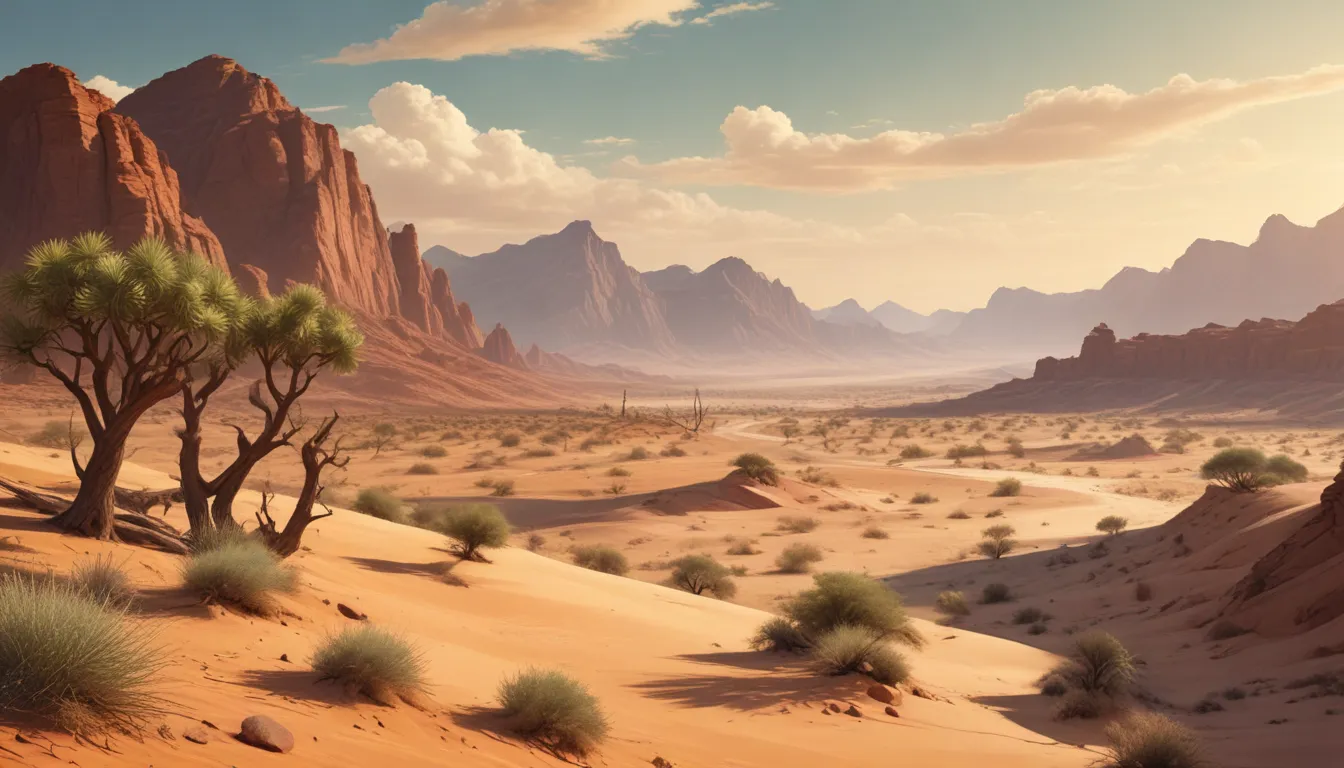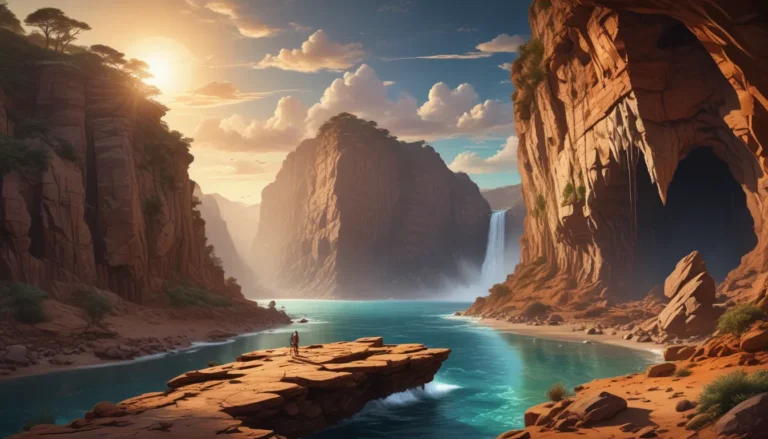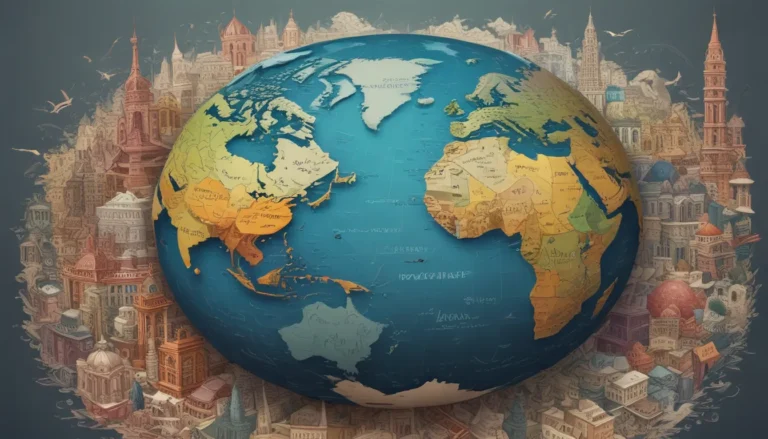A Note About Images: The images used in our articles are for illustration purposes only and may not exactly match the content. They are meant to engage readers, but the text should be relied upon for accurate information.
Arid regions, with their unique landscapes and challenging climates, have long captivated the imagination of adventurers, researchers, and nature enthusiasts alike. These barren and parched areas, characterized by limited rainfall and scarce vegetation, hold a certain allure and mystery. From deserts to steppes, these locales often exhibit extreme temperatures and seemingly inhospitable conditions. However, they are also home to an array of fascinating phenomena and surprising facts.
In this article, we will delve into the enigmatic world of arid regions and uncover 17 intriguing facts that will shed light on these extraordinary places. From the mesmerizing sand dunes that shift and shape the landscape to the resilient species that manage to thrive in such harsh environments, prepare to be amazed by the wonders that can be found within these dry and unforgiving territories.
Key Takeaways:
- Arid regions, like deserts, are home to unique animal species and valuable mineral resources, making them fascinating and important landscapes to explore and protect.
- Climate change is impacting arid regions, threatening their delicate ecosystems and communities, but efforts are being made to preserve and restore these enigmatic landscapes for the future.
The Sahara Desert: A Vast Expanse of Sand Dunes
The largest arid region in the world is the Sahara Desert, stretching across North Africa. Covering approximately 3.6 million square miles, the Sahara Desert is the largest hot desert on Earth. Its vast expanse of sand dunes and rocky terrain presents a mesmerizing sight that has captivated travelers and explorers for centuries.
The Atacama Desert: The Driest Place on Earth
Located in Chile, the Atacama Desert is considered the driest place on Earth, receiving almost no rainfall. Its extreme aridity and unique geographical features have attracted scientists from around the world for research and exploration, making it a hotspot for studying desert ecosystems.
The Gobi Desert: A Paleontological Treasure Trove
Contrary to its barren appearance, the Gobi Desert in Mongolia and China holds a significant paleontological treasure trove. Numerous dinosaur fossils, including the famous Velociraptor, have been discovered in this arid region, shedding light on the prehistoric creatures that once roamed the Earth.
The Namib Desert: Home to Towering Sand Dunes
The Namib Desert boasts the highest sand dunes in the world, stretching for hundreds of miles along the Atlantic coast of Namibia. Nature’s incredible ability to shape the land is showcased in these towering dunes, creating a surreal and mesmerizing landscape that is truly awe-inspiring.
Adaptable Plant Species: Survivors in Harsh Conditions
Certain plant species in arid regions have developed unique survival mechanisms that allow them to survive for decades without rainfall. The Resurrection Plant, for example, can seemingly come back to life after years of desiccation, showcasing the remarkable adaptations of flora in these challenging environments.
Unique Animal Species: Thriving in Extreme Environments
Despite the challenging conditions, arid regions are home to a variety of animal species that have adapted to survive in extreme heat and limited water availability. From the iconic camel to the agile kangaroo rat and the elusive Fennec fox, these creatures demonstrate the resilience of life in arid regions.
The Rub’ al Khali: An Otherworldly Landscape
The Rub’ al Khali, also known as the Empty Quarter, is the largest continuous sand desert in the world, located in the Arabian Peninsula. Stretching across multiple countries, its vast sea of sand dunes presents a captivating and otherworldly landscape that evokes a sense of wonder and mystery.
Fragile Ecosystems: Maintaining Global Biodiversity
Arid regions host unique and delicate ecosystems that play a vital role in maintaining global biodiversity. Despite their harsh environment, these ecosystems are often fragile and easily disrupted by human activities such as overgrazing and habitat destruction, underscoring the importance of conservation efforts.
Ancient Civilizations: Flourishing in Arid Regions
Contrary to popular belief, arid regions have been home to thriving civilizations throughout history. From the ancient civilizations of Egypt along the Nile River to the Indus Valley Civilization in present-day Pakistan and India, these regions have a rich cultural and historical significance that continues to intrigue archaeologists and historians.
Extreme Temperature Variations: A Challenge for Flora and Fauna
Arid regions can experience extreme temperature variations, with scorching daytime temperatures giving way to significantly colder nights. These rapid fluctuations pose additional challenges for both plants and animals in these regions, testing their resilience and adaptability to changing conditions.
Valuable Mineral Resources: Hidden Beneath the Surface
Hidden beneath the surface of arid regions lie valuable mineral resources, including oil and gas deposits, precious metals, and gemstones. These resources have played a significant role in shaping the economies of many countries, highlighting the importance of sustainable resource management in these regions.
Biodiversity Hotspot: The Sonoran Desert’s Diverse Cacti
The Sonoran Desert in North America is home to a diverse range of cacti, including the iconic Saguaro cactus and the prickly Cholla cactus. Known for its spectacular display of desert flora, this arid region showcases nature’s ability to adapt and thrive in challenging circumstances, providing a haven for unique plant species.
Astronomical Observatories: Studying the Universe from Arid Regions
Certain arid regions are known for their clear skies and minimal light pollution, making them ideal locations for astronomical observatories. These observatories allow scientists to study the universe with unprecedented clarity and precision, unlocking the mysteries of the cosmos from the depths of the desert.
Adventure and Exploration: Embracing the Challenges of Arid Regions
For adventurers and explorers, arid regions offer a wealth of opportunities for thrill-seekers and nature enthusiasts alike. From desert safaris to sandboarding on immense dunes, these regions entice individuals with the allure of untouched landscapes and exhilarating experiences, inviting them to explore the wonders of these unique environments.
Climate Change Impacts: Threatening Arid Regions
Climate change poses a significant threat to arid regions, exacerbating desertification and causing shifts in rainfall patterns. These changes have far-reaching impacts on the delicate ecosystems and communities that rely on these regions for survival, underscoring the urgent need for conservation and sustainable practices to preserve these landscapes.
Preservation Efforts: Safeguarding Enigmatic Landscapes
Recognizing the importance of arid regions, conservation organizations and local communities are working together to preserve and restore these unique landscapes. Through sustainable practices and conservation initiatives, there is hope for the future of these enigmatic regions, ensuring that they remain a source of wonder and inspiration for generations to come.
Cultural Significance: Ancient Myths and Traditions
Arid regions hold immense cultural significance, shaping the myths, legends, and traditions of various communities around the world. From ancient rituals to traditional practices, these regions have played an integral role in the cultural identity of civilizations throughout history, leaving a lasting legacy that continues to influence our understanding of the natural world.
Awe-Inspiring Beauty: Resilience and Adaptability
17 Enigmatic Facts About Arid Regions highlight the awe-inspiring beauty and resilience of these unique landscapes. From their extreme conditions to their hidden treasures, arid regions continue to captivate our imagination and remind us of the diverse wonders found on our planet. Exploring these regions offers not only a chance to witness breathtaking landscapes but also valuable insights into the adaptability and resilience of life on Earth.
Conclusion
Arid regions are fascinating and enigmatic landscapes that are both challenging and full of hidden wonders. From the vast deserts to the arid steppes, these regions have unique characteristics that set them apart from other geographical areas. The 17 facts mentioned above provide a glimpse into the intriguing world of arid regions and the remarkable adaptations found in their flora and fauna. Whether it’s the extreme temperatures, the scarcity of water, or the resilient life forms that thrive in these conditions, arid regions continue to captivate the imagination and challenge our understanding of the natural world.
As we continue to study and understand arid regions, we gain a deeper appreciation for the resilience and adaptability of life on Earth. Protecting these fragile environments and implementing sustainable practices will be crucial in ensuring the survival of these unique ecosystems for future generations to marvel at and learn from. Embrace the wonder and beauty of arid regions, where nature’s resilience and adaptability shine through in the face of adversity.
FAQs
-
What is considered an arid region?
An arid region is typically defined as an area that receives very little rainfall, resulting in a scarcity of water and a dry climate. -
What are some examples of arid regions?
Examples of arid regions include the Sahara Desert in Africa, the Arabian Desert in the Middle East, the Gobi Desert in Asia, and the Mojave Desert in North America. -
How do plants and animals survive in arid regions?
Plants and animals in arid regions have developed unique adaptations to survive in harsh conditions. These adaptations can include storing water, having deep root systems, being nocturnal, and having specialized mechanisms for conserving energy and water. -
Are there any human settlements in arid regions?
Yes, there are several human settlements in arid regions. These settlements often rely on innovative techniques such as irrigation and water conservation to sustain life in these challenging environments. -
Are arid regions affected by climate change?
Yes, arid regions are vulnerable to the impacts of climate change. Rising temperatures and changing precipitation patterns can further exacerbate water scarcity in these regions, making it even more challenging for plants, animals, and humans to survive. -
Can tourism be sustainable in arid regions?
Tourism in arid regions can be sustainable if proper measures are implemented to protect the delicate ecosystems. This includes responsible tourism practices, minimizing environmental impact, and supporting local communities in developing sustainable tourism initiatives.
Arid regions captivate with their enigmatic landscapes and astonishing adaptations, but nature’s wonders don’t stop there. Venomous predators like the Nubian spitting cobra lurk in the shadows, ready to strike. Desert plants such as the hardy Dasylirion showcase remarkable resilience in the face of extreme conditions. Even the desert blonde tarantula, with its striking appearance and fascinating behaviors, adds to the allure of these seemingly inhospitable environments. From the depths of the dunes to the heights of the sky, arid regions and their inhabitants never cease to amaze and inspire.
Was this page helpful?
Our commitment to delivering trustworthy and engaging content is at the heart of what we do. Each fact on our site is contributed by real users like you, bringing a wealth of diverse insights and information. To ensure the highest standards of accuracy and reliability, our dedicated editors meticulously review each submission. This process guarantees that the facts we share are not only fascinating but also credible. Trust in our commitment to quality and authenticity as you explore and learn with us.






